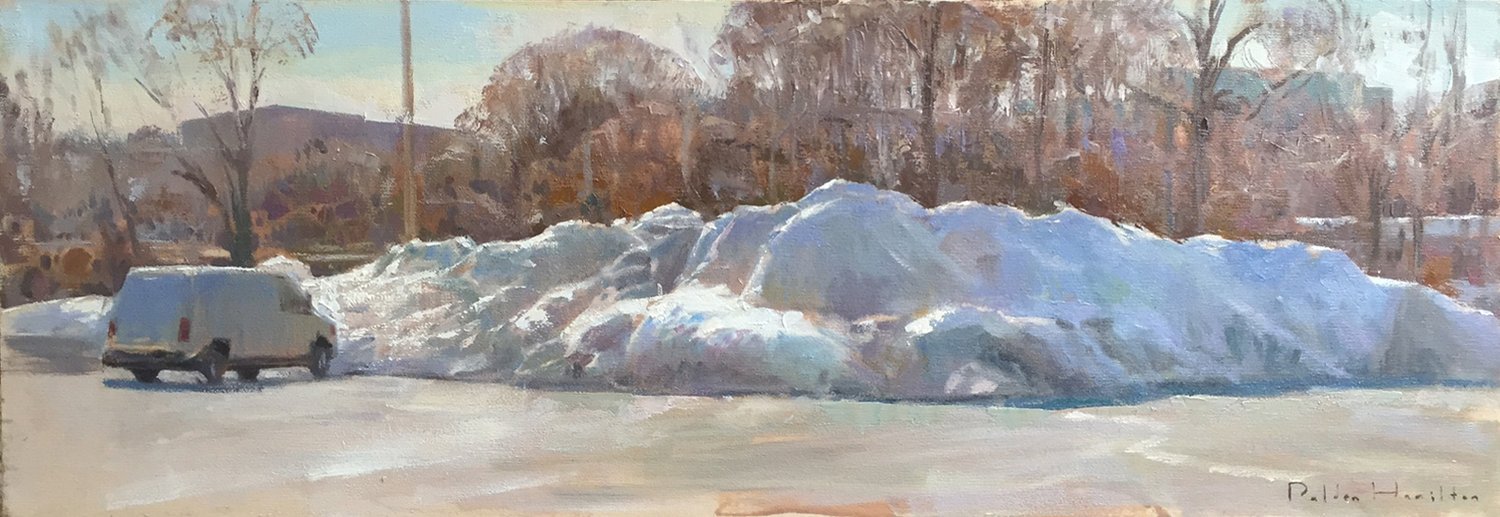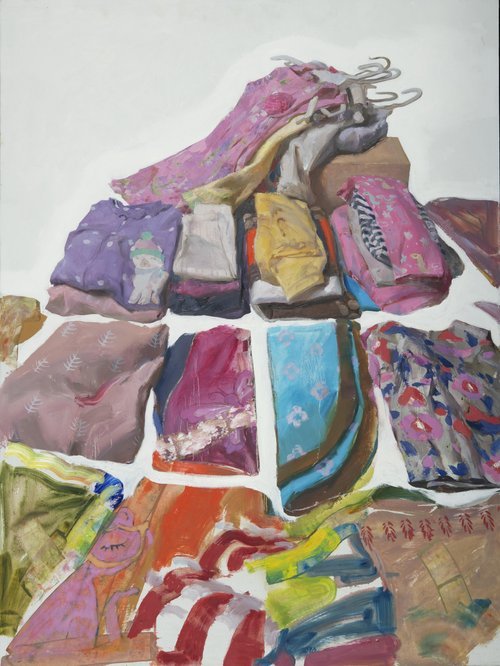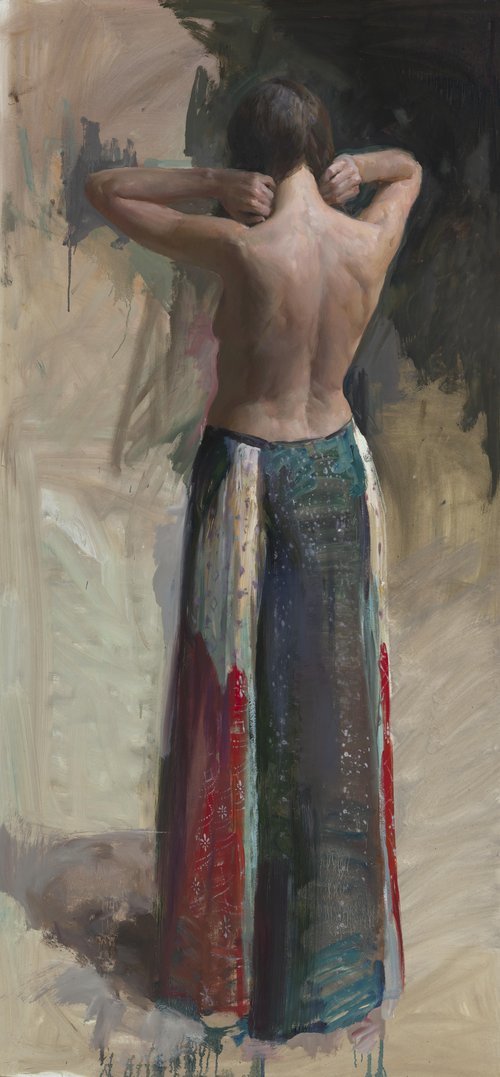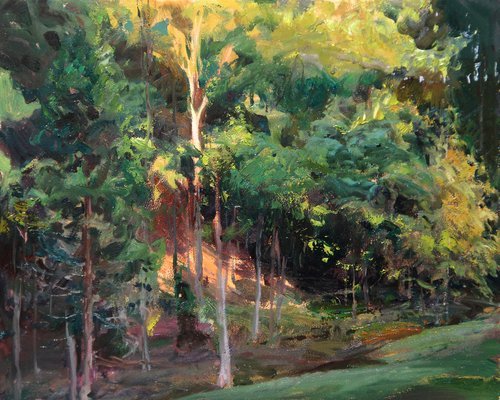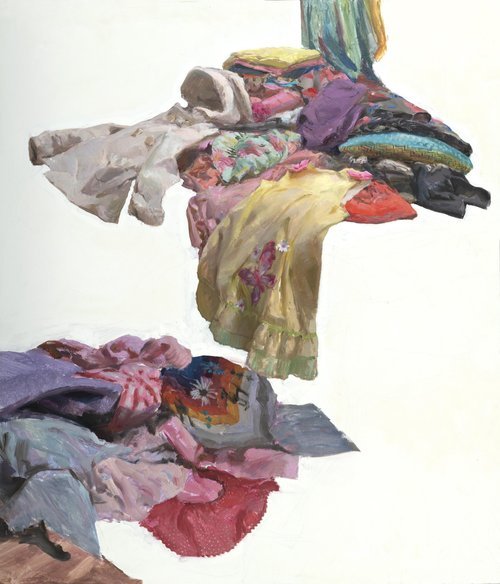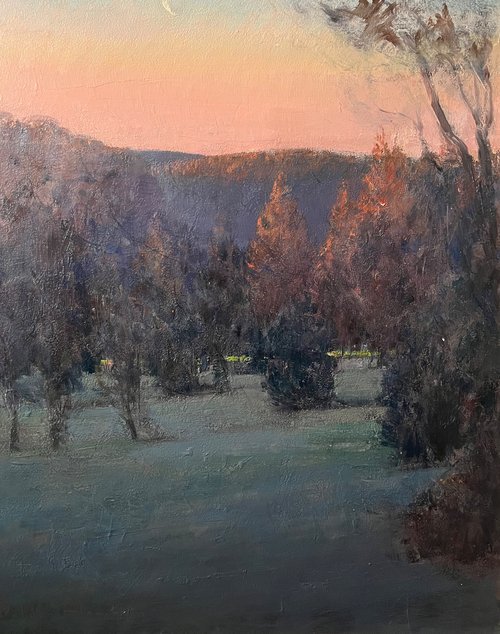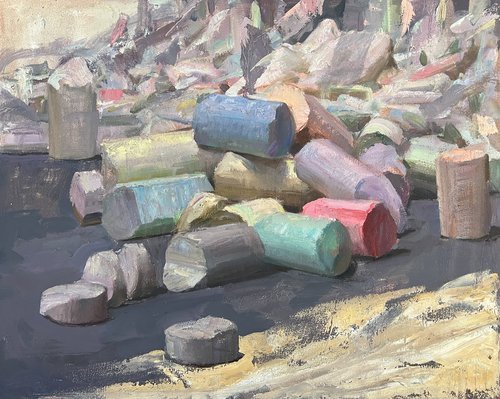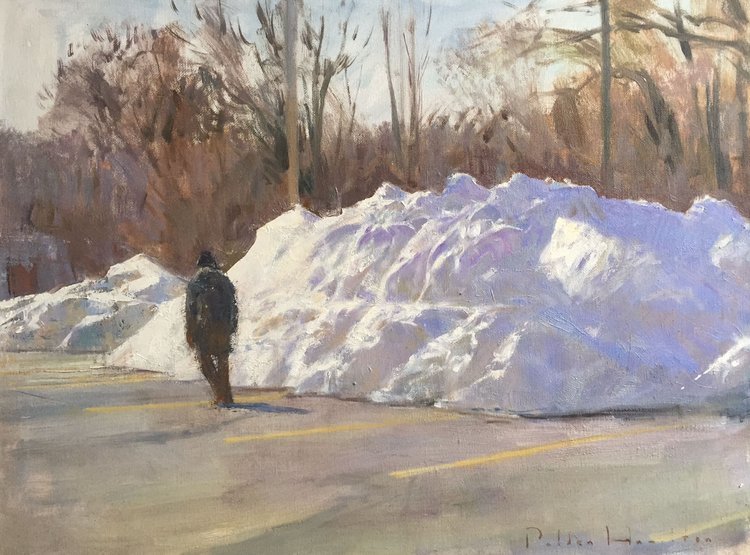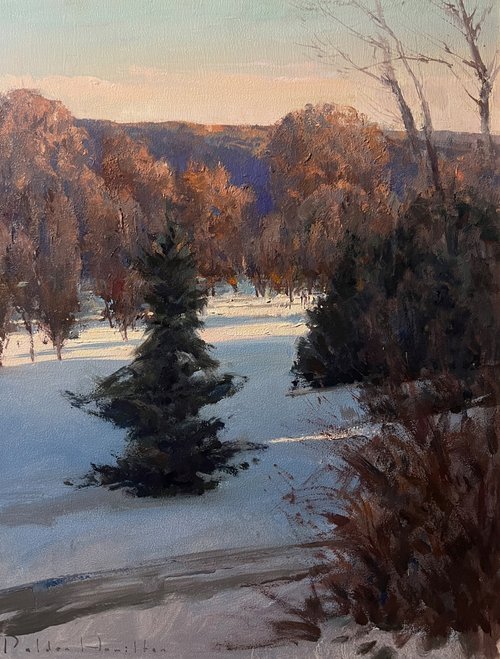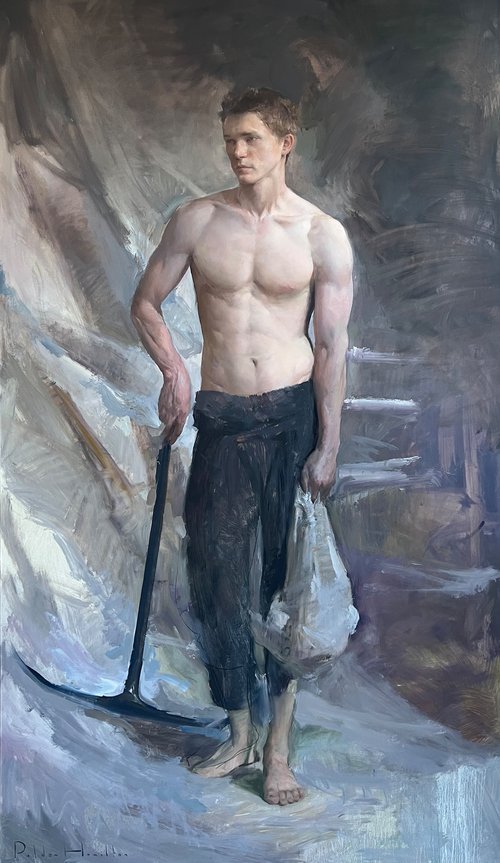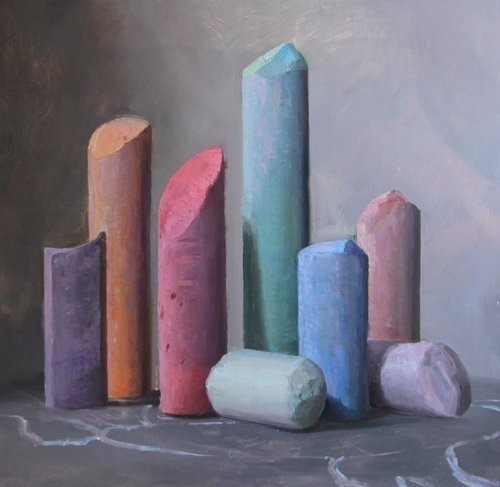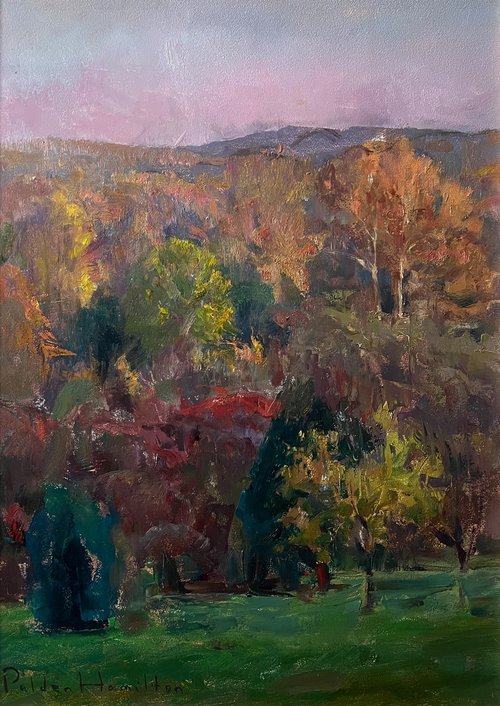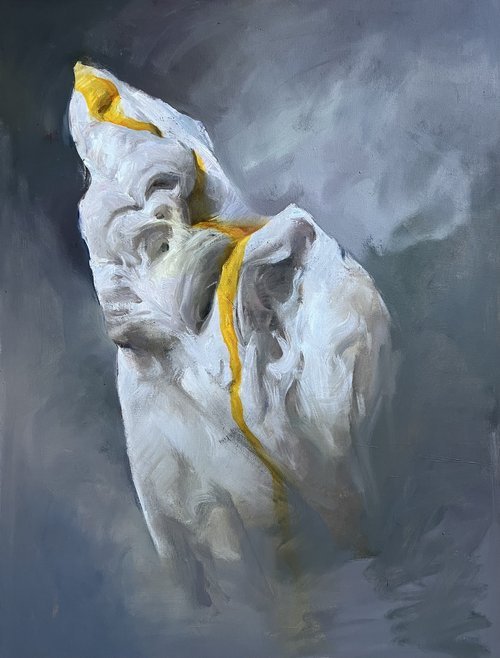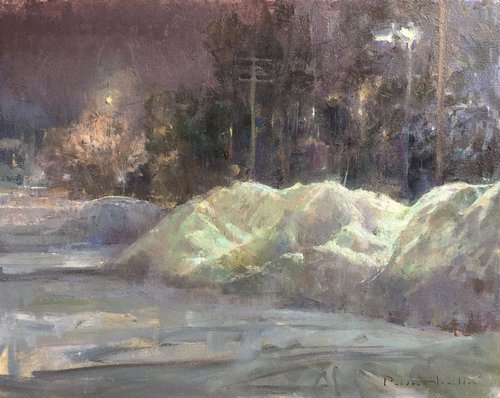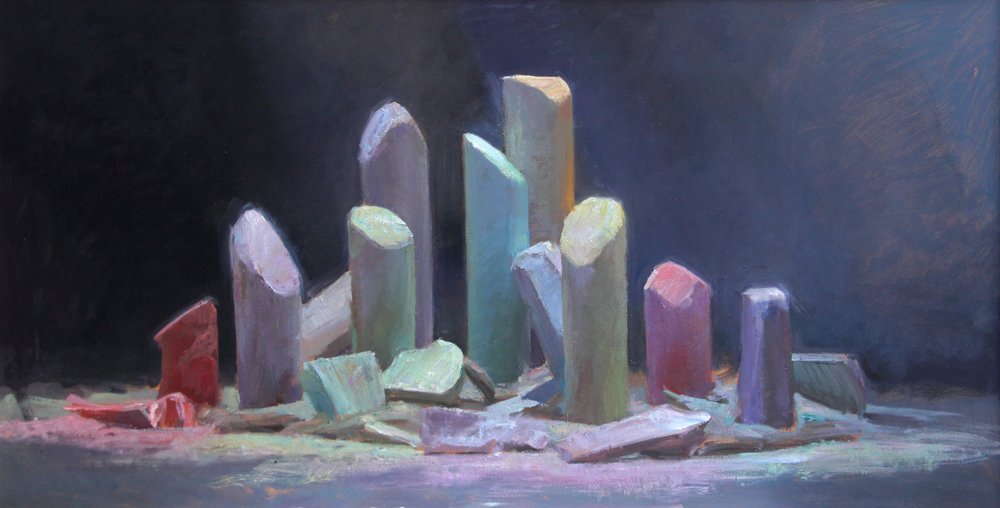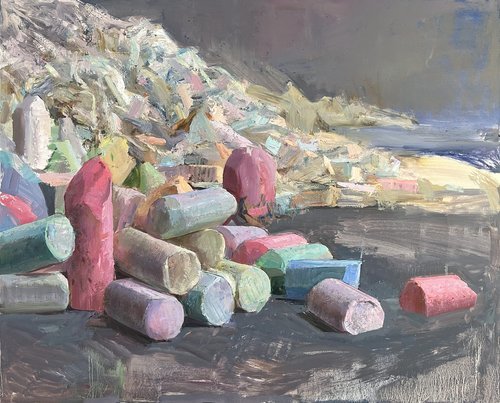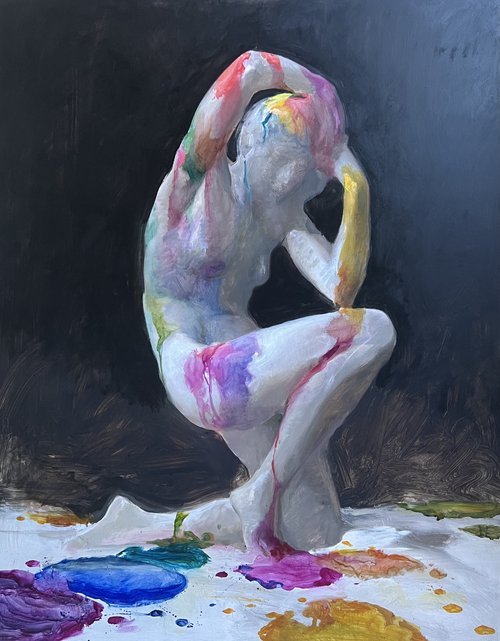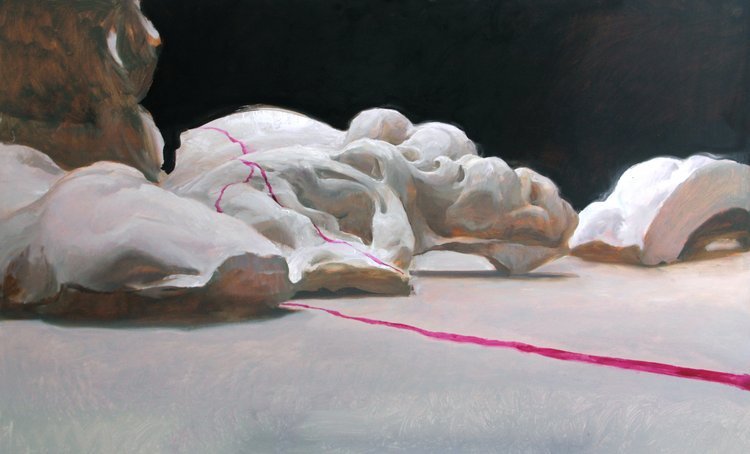Palden Hamilton has said the word ‘concrete’ twenty times in our interview. (I’m kidding; not really, but he definitely said it a bunch of times.) He also talked about ‘structure’ and ‘form’ and ‘discipline’…and then we went rogue.
I’d expected to learn from this thoughtful, gentle man about his evolving art: what ideas, what subjects, what level of abstraction, colors, techniques, and materials he’s exploring.
What I didn’t expect was that we’d be going much (much) deeper, delving into what is the purpose of art? What is the relationship of humans with art?
We talked about early cave paintings. About how even children in preschool feel the pull of art as they make their little stick figures. The way Italian Renaissance-era painters (stay with me here) from Florence and Venice perfectly summarize the major schism in the art world: those who paint things (buildings, trees, landscapes, people) and those whose work explores feelings (our reaction to the painting’s subject or sunlight or turbulence, or in the case of abstract works, to the color and form presented. in other words, painting things versus feelings, and why artists choose one or the other.
Whew.
And as we spoke, the ideas behind Palden’s paintings emerged. The way, ever since he was a child, he felt the allure of something mysterious, something unheard and unseeable whose ancient rhythms flow though time, connecting us with…with what? The unknowable.
At the same time, he teaches students how to put simple forms together, to put aside preconceived notions and watch how light falls on them, to work in simplicity, to transcribe angles and lines onto paper, to learn procedure and technique.
This is what and why Palden paints: driven by a lifelong desire to somehow reconcile the unfathomable essence of life with the concrete world of reality and structure and materials used.
In one painting, his memory of tumbled, broken Roman pillars in Ephesus are referenced by thick stalks of colorful sidewalk chalk. Some are standing, some have fallen. Both are things made of mud and stone. Both are beautiful. Both are art.
Neither lasts.
Tumbled Columns by Palden Hamilton
In another work, a bust of Voltaire—the man of ideas—lies shattered on the floor. But we don’t linger on what is broken: instead, our eye follows a glimmer of color that flows across the broken bust, moving with the form but not limited by it, the vibrant yellow-gold a metaphor, invigorating the dead shards with a new kind of life—a moment in which form and structure and rules and things that break intersect with the deep ancient beauty of the unknowable, of things that were and still are. The flow of pure color, unbound by form and structure and unconcerned with breaking, is the unfathomable, the life essence: the what has always been and is and will be that cannot be understood or contained or described, that rolls right across the canvas in front of our eyes, inviting us. Feel. Exist. Believe. Be.
Palden remembers looking out at the woods at dusk as a child, overwhelmed by the vastness and ancientness of nature and having a sense of longing for the unknowable. He would draw for hours the small things of life: a bird, a branch, a tree’s roots. The act of drawing connected him with the longing, somehow resolved it.
Pink Dusk by Palden Hamilton
“All my endeavors now are a continuation of that childhood desire to reach towards that which is beyond our knowing,” he says. “I’m trying to figure out how it connects to daily life, to present reality. But even as I work, I wonder: what is it in me that insists on taking colored mud or a burnt stick [paint or charcoal] and making art? Why can I only work from life, standing outside freezing in the snow, or asking a model to sit for hours?”
He speaks of his students at MICA and Zoll Studios again. “People think artists work in an atmosphere of unbridled creative freedom, but we don’t. Constraints exist. I teach my students that the constraints, the limitations, are important: the space on the canvas, the amount of time available to work. An artist’s mission is to go into those constraints of time and space and the shape of the canvas or paper, and reach for the infinite possibilities in that framework.”
What is art, you may ask? That, my friends. From the earliest cave painters to today, the artist is pulled by an irresistible urge to go within the framework of the concrete and the real, and in one way or another connect with the vast ancient questions: who are we, why are we here, what is our purpose? To work within constraints of paper and canvas and paint and charcoal while reaching towards the unknowable, the longing for something beyond understanding.
Fortunately for us, Palden accepts that impossible challenge. I look forward to seeing what he’ll paint next.
Palden Hamilton’s art exhibit will be on display until January 29 at the Manor Mill, a laid-back fine arts gallery in an historic grist mill in Monkton. For extra-cool things to do in Baltimore County this weekend, head up to the Mill, where Palden will be doing a live painting demonstration. While at the Manor Mill you’ll find not only art shows but local crafts, music, and classes—yes, even in woodworking and welding.
By Katie Aiken Ritter
Instagram: @KatieRitterVikingWriter
Contact
gallery@manor-mill.com
Instagram: @manormillgallery




